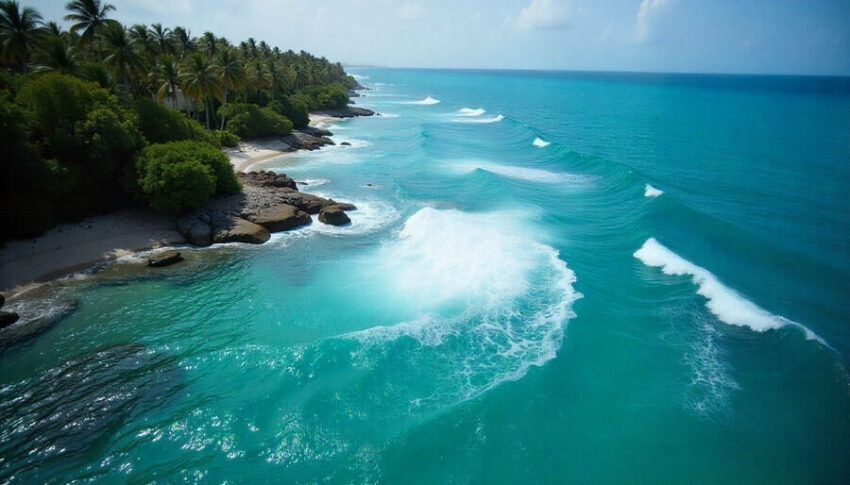Bahamas Tourism Faces Major Setbacks in the Wake of Hurricane Melissa and Recovery Efforts Begin Immediately

Hurricane Melissa, one of the most intense storms of the 2025 hurricane season, has made its way through the Caribbean, leaving devastation in its path. Initially classified as a Category 5 storm, Melissa has been downgraded to a Category 1, though the storm’s destructive impact remains. After causing widespread damage in Jamaica earlier this week, the storm turned its focus toward the southeastern Bahamas on Wednesday, with officials preparing for its arrival in the region. As the storm progresses, tourism operations across the islands face significant disruption, but the Bahamas’ government and tourism sector are working tirelessly to ensure the safety of visitors and restore normalcy as quickly as possible.
The Bahamas, known for its picturesque beaches and vibrant cultural heritage, is a top destination for tourists from around the world. Tourism plays a pivotal role in the nation’s economy, making it essential to protect the industry during such crises. With the storm weakening but still causing considerable rainfall and high winds, the nation’s tourism sector braces for challenges while ensuring the safety of its people and visitors.
Tourism Faces Uncertainty Amid Hurricane Melissa
Melissa’s path through the Caribbean, with the Bahamas in its sights, has sent ripples through the region’s tourism industry. The storm’s early impact on Jamaica was severe, and as it approached the southeastern Bahamas, residents and travelers alike prepared for its arrival. The Ministry of Tourism, Investments & Aviation swiftly issued warnings for those in the affected areas, urging caution and providing guidance on evacuation procedures.
While the storm caused major disruptions, particularly in the southeastern islands, other parts of the Bahamas, such as Nassau, Grand Bahama Island, and Freeport, remained unaffected. These areas continued to welcome tourists and ensured that vacationers could continue to enjoy their trips with minimal interruption. However, given the unpredictability of hurricanes, the storm’s effects have cast a shadow over the broader tourism landscape in the region.
Proactive Measures to Ensure Safety
In response to Hurricane Melissa, the Bahamian government quickly enacted precautionary measures to protect both residents and visitors. The southeastern Bahamas, where the storm’s intensity was felt most strongly, saw evacuations to safeguard lives. Government officials, in coordination with emergency response teams, provided real-time updates and instructions to ensure people remained safe.
Evacuations were prioritized, and temporary shelters were set up for those in vulnerable areas. The government’s proactive approach to storm preparedness reflects its commitment to protecting citizens and ensuring that the tourism sector can rebound quickly after such disruptions. As the storm’s path shifted westward, officials focused on monitoring the storm’s impact on surrounding islands and maintained communication with local hotels and resorts to ensure the safety of guests.
Though the storm passed, the government’s advice remained crucial. Tourists were encouraged to stay informed through official channels, monitor weather alerts, and take necessary precautions to protect themselves and their property. With the storm’s passage expected to weaken by the time it reached Bermuda, the worst of the effects on the Bahamas appeared to be behind them.
The Bahamas’ Resilience in the Face of Disaster
Despite the heavy toll of Hurricane Melissa, the Bahamas is no stranger to the impact of natural disasters. The country has a proven history of resilience, and the tourism sector has been quick to adapt to the challenges posed by the storm. The Bahamas’ tourism industry continues to show remarkable strength, even amid difficult circumstances. Nassau and Freeport, which remained largely unscathed, continued operations as usual, and tourist activities resumed almost immediately.
The archipelago’s decentralized nature – with over 700 islands spread across more than 100,000 square miles – has allowed some regions to remain unaffected. As a result, tourists who were already on unaffected islands were able to enjoy their vacations without disruption. The government has also focused on rebuilding efforts, ensuring that those parts of the country that were impacted could recover and continue to offer the same level of hospitality for which the Bahamas is known.
Looking Ahead: Recovery and Rebuilding Efforts
As the storm moved out of the region, the Bahamas began focusing on recovery and rebuilding efforts. While Hurricane Melissa caused short-term disruptions, the long-term outlook for the Bahamas remains positive. The Bahamas’ tourism sector is expected to recover quickly, as it has in previous years following natural disasters. With a strong infrastructure, supportive government policies, and a resilient local population, the country is well-positioned to bounce back.
Tourists planning to visit the Bahamas in the coming weeks are advised to check with airlines and hotels for updates on travel schedules and accommodations. Given the hurricane’s impact, some changes to flight routes and hotel availability may occur, but the islands will soon return to normal, welcoming visitors back to its shores.
The Ministry of Tourism, along with disaster response teams, continues to work around the clock to restore normalcy in affected areas, and the Bahamas is expected to once again become a safe and sought-after travel destination. The country’s dedication to tourism and recovery shows its resilience, ensuring that the Bahamas will continue to shine as a premier Caribbean destination in the future.
The post Bahamas Tourism Faces Major Setbacks in the Wake of Hurricane Melissa and Recovery Efforts Begin Immediately appeared first on Travel And Tour World.